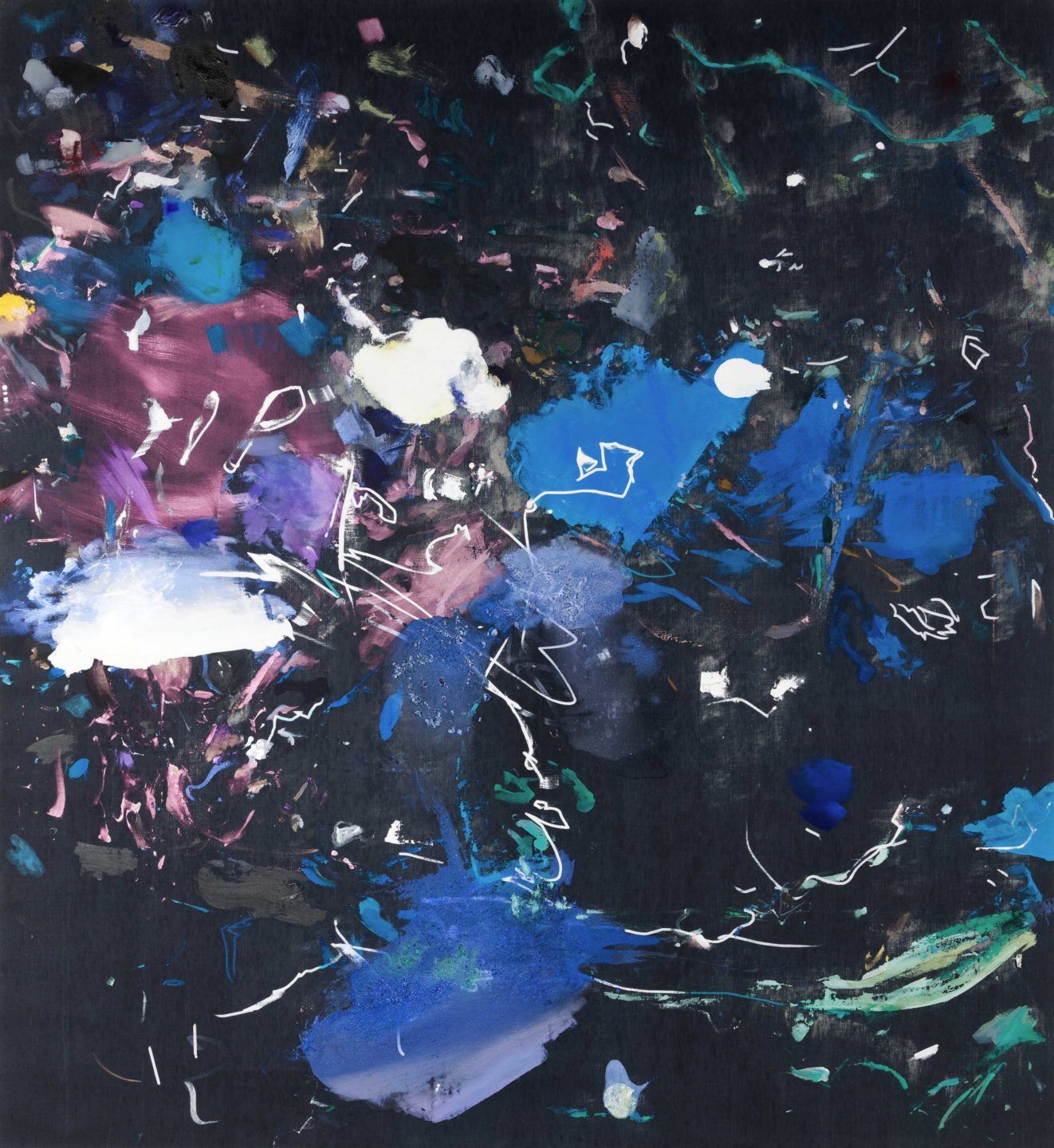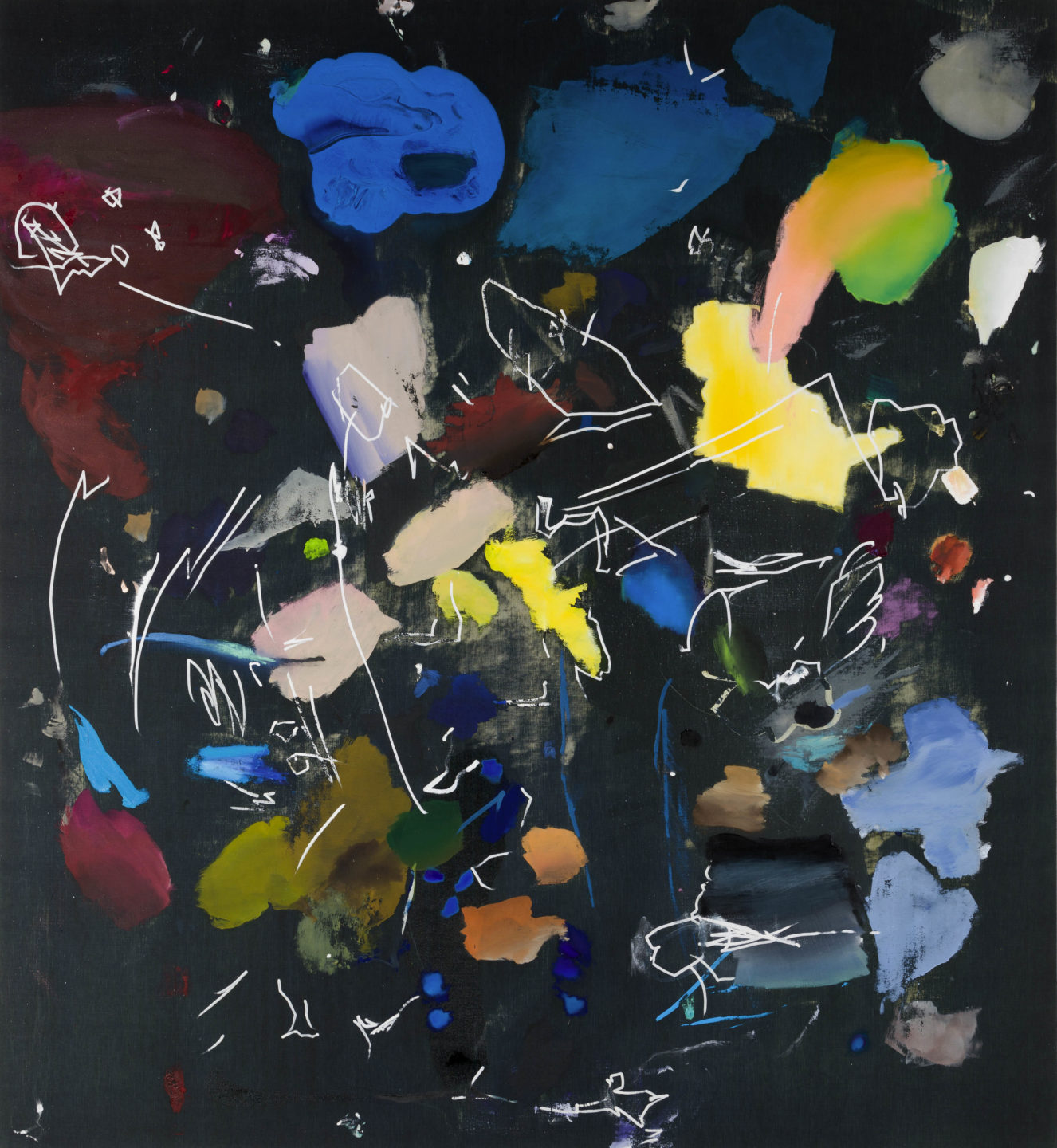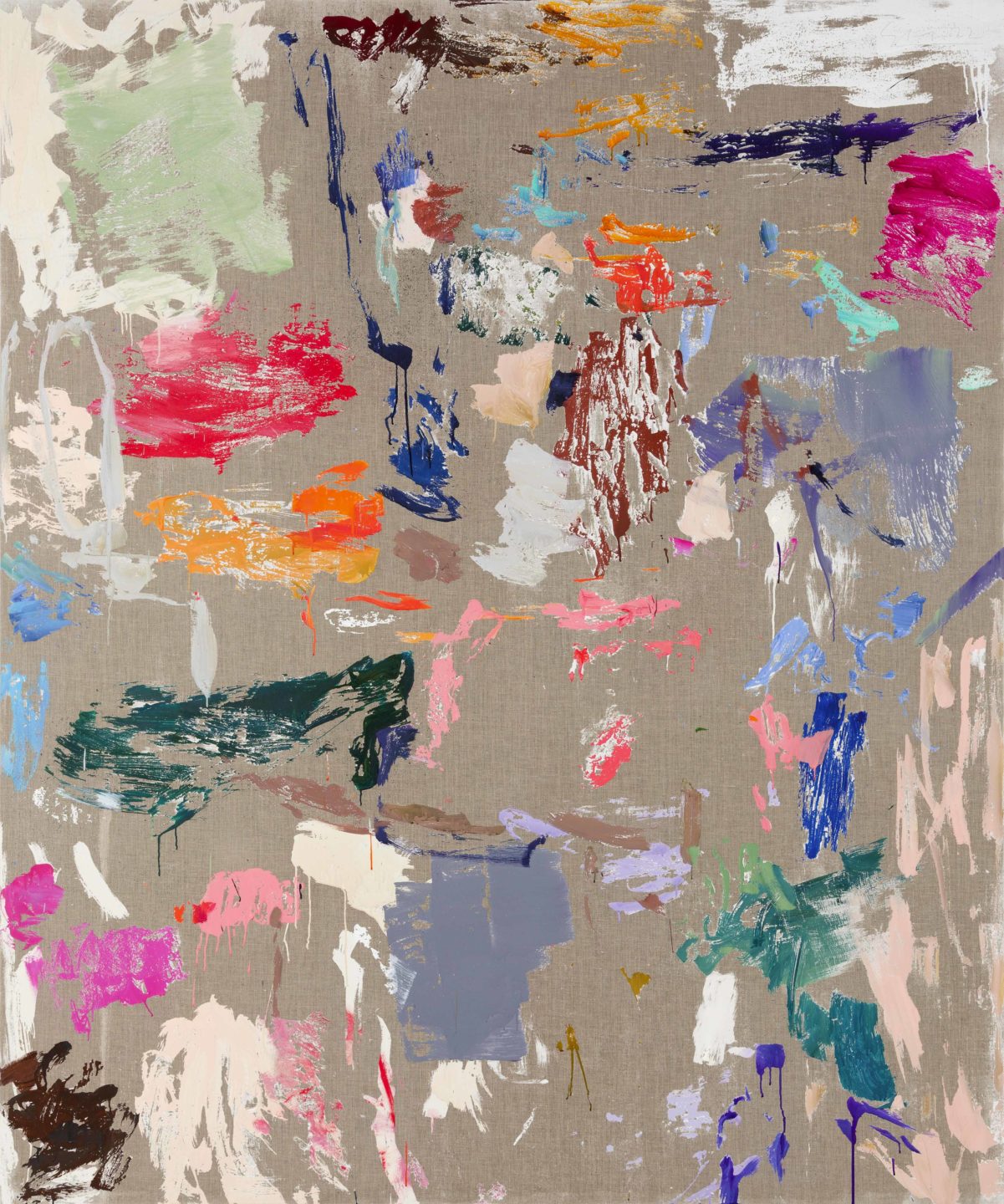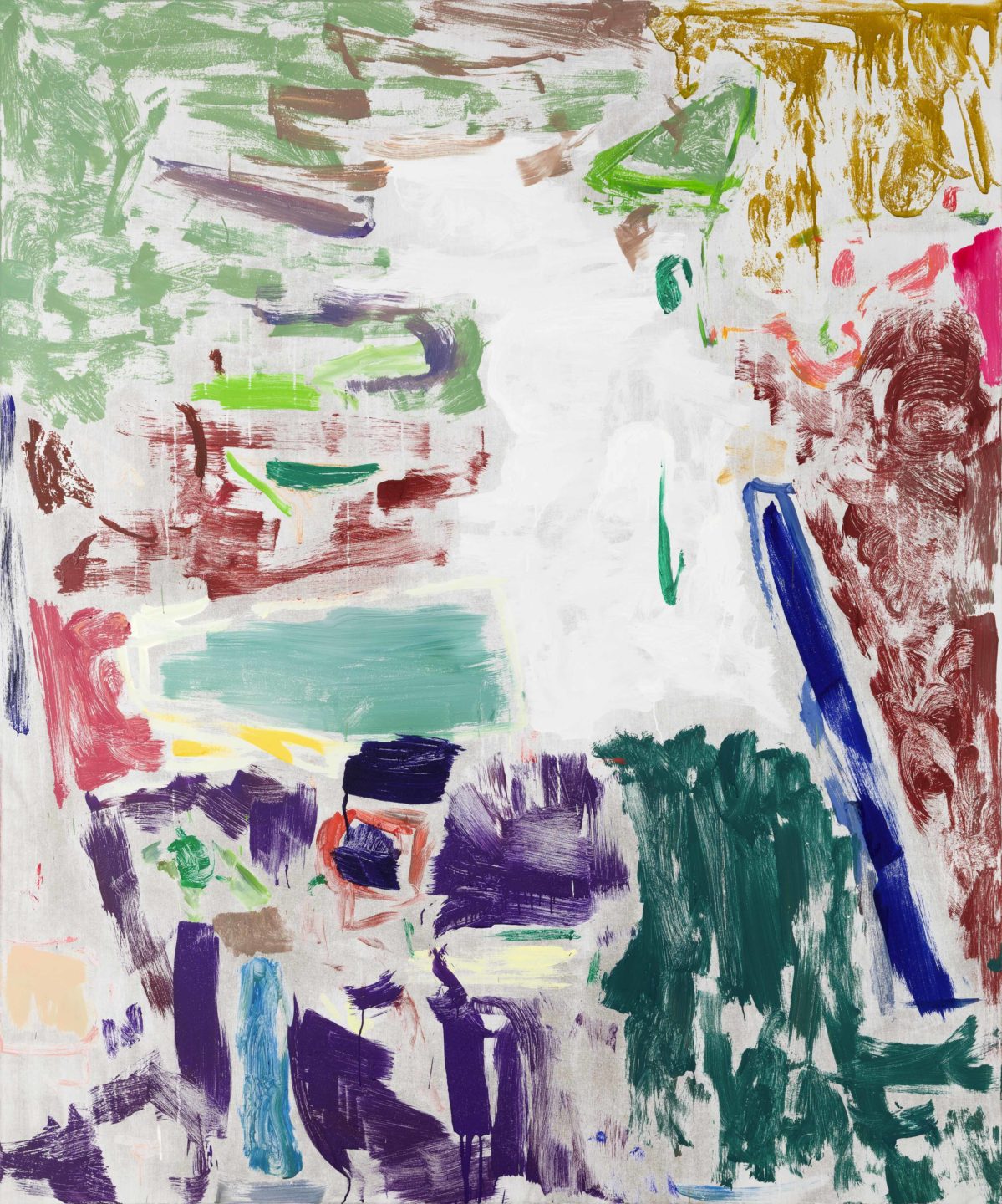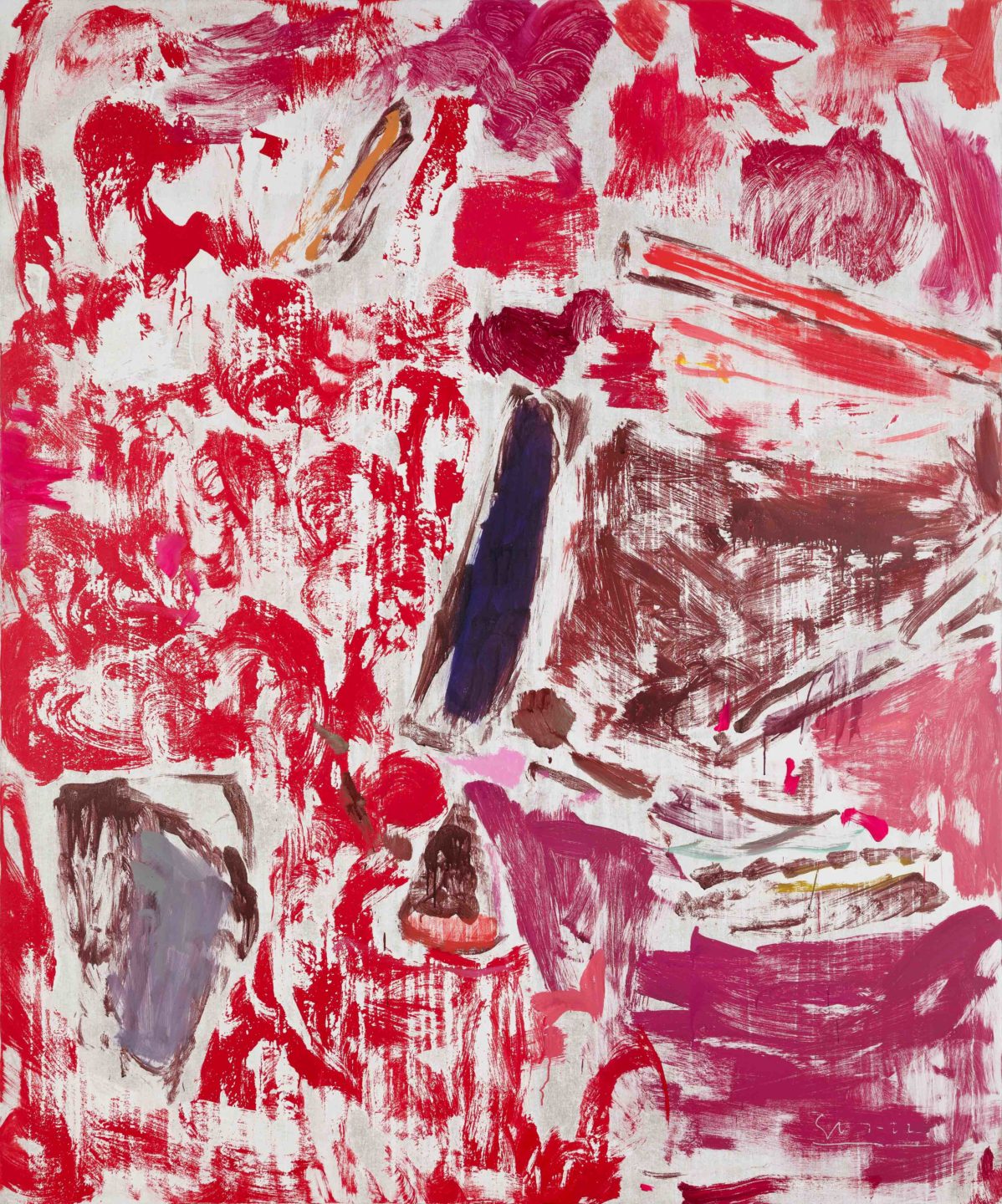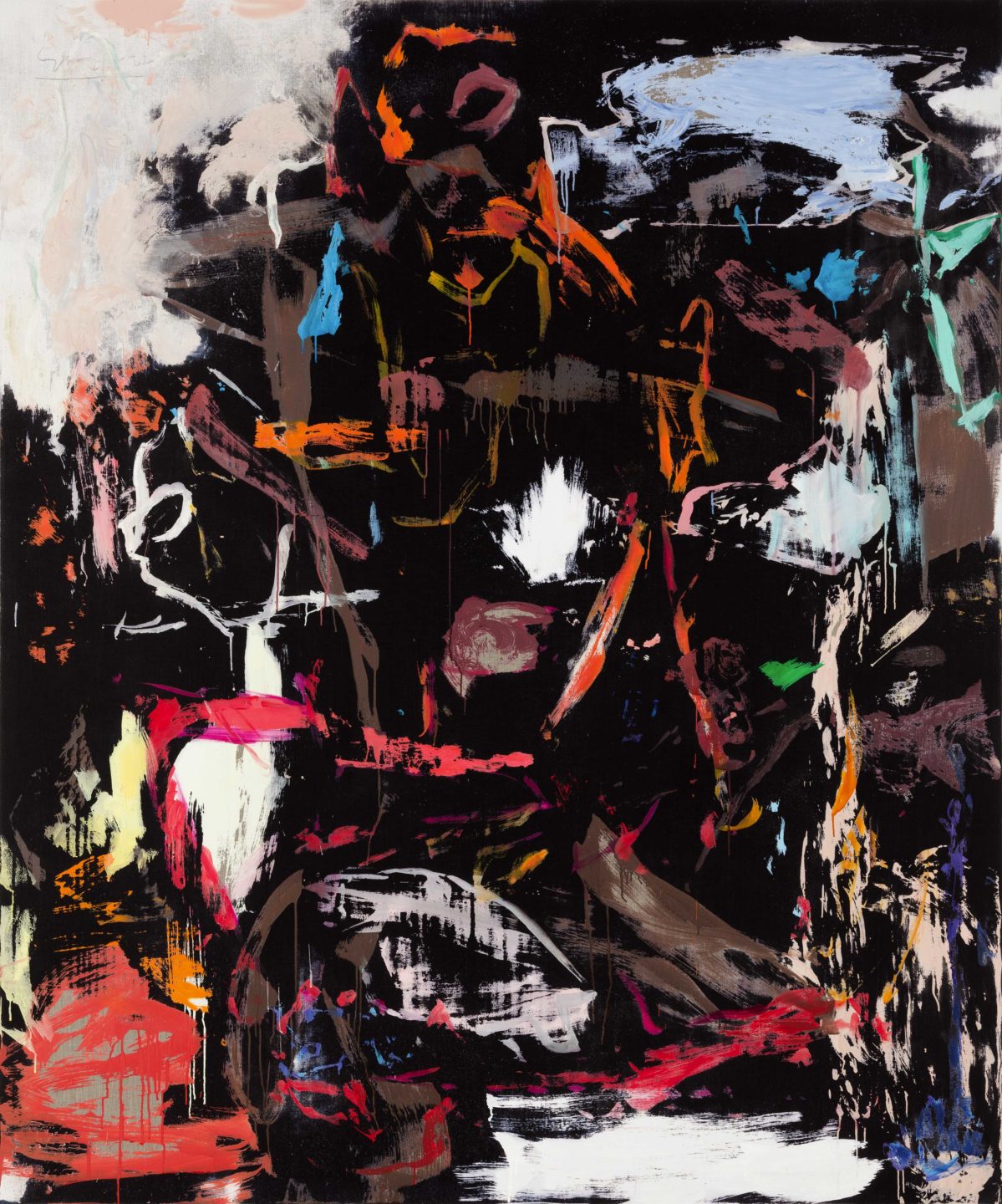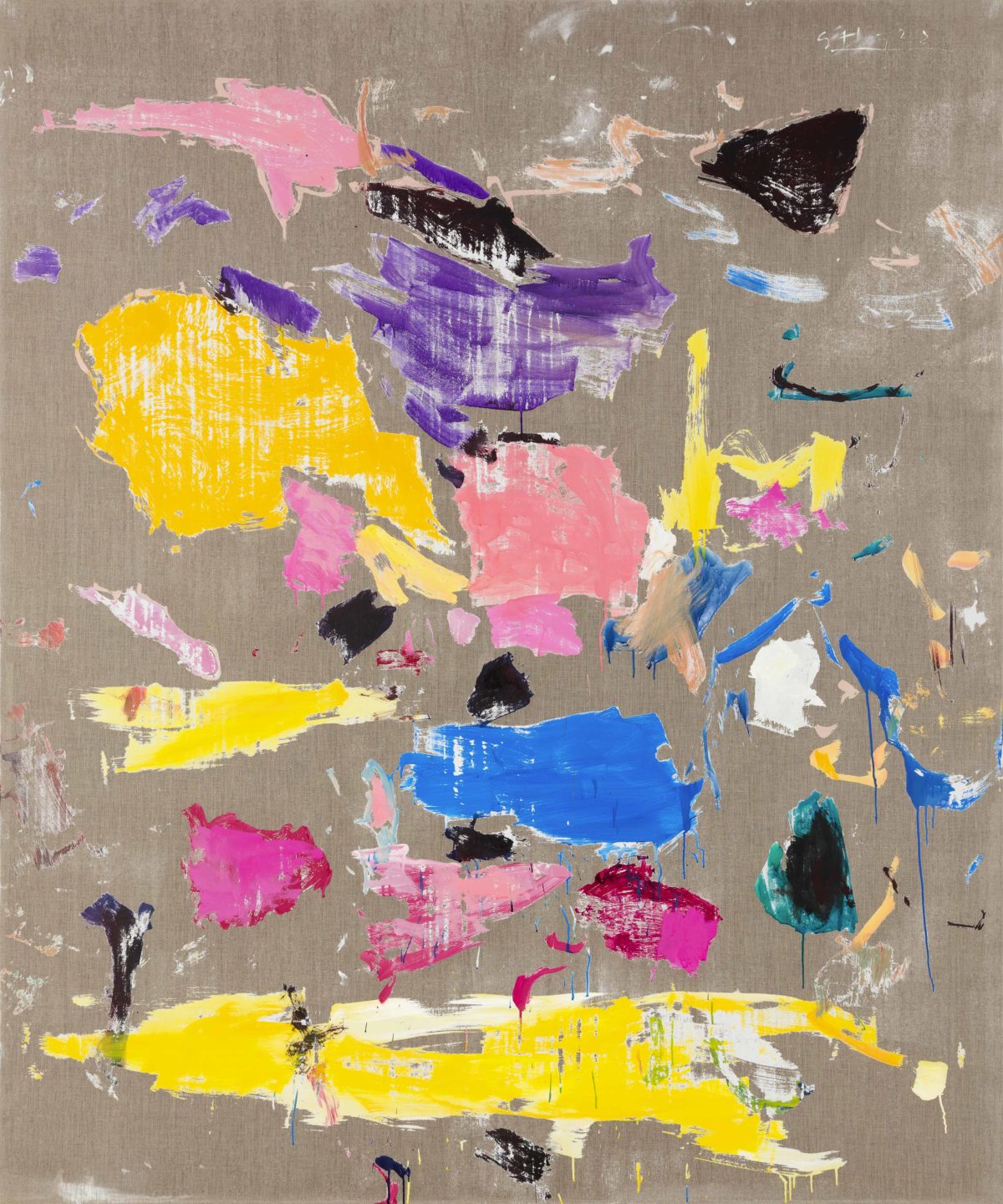Secundino Hernández: time TIME
Exhibition 11 October–12 November 2022
16 Wharf Road, London N1 7RW
Victoria Miro is delighted to present time TIME, an exhibition of new paintings by Secundino Hernández.
One of the most dynamic painters of his generation, Secundino Hernández is acclaimed for his spirited enquiry into the language, history and enduring potential of abstraction. New works continue his investigation into the vocabulary of painting (line, form, gesture and colour ) and historical classifications of the medium (such as action and colourfield painting) to create images that, radiating a sense of urgency, explore not only their own unique process of creation but our responses to a painted surface.
For Hernández, painting is both a physical and cerebral activity, a conduit for intellectual and philosophical enquiry. Whether employing strong linear elements, by turns painterly or calligraphic, or rich bursts of colour, his work corrals diverse influences within a signature abstract language, often collapsing traditional distinctions and hierarchies, as well as a sense of time. In Hernández’s hands, a monochrome might also be an action painting, while an action painting might, on closer inspection, reveal itself to be an almost archaeological excavation of the picture plane’s sedimentary layers.
The exhibition is accompanied by a new publication featuring an essay by Wells Fray-Smith, excerpts below.
Secundino 1
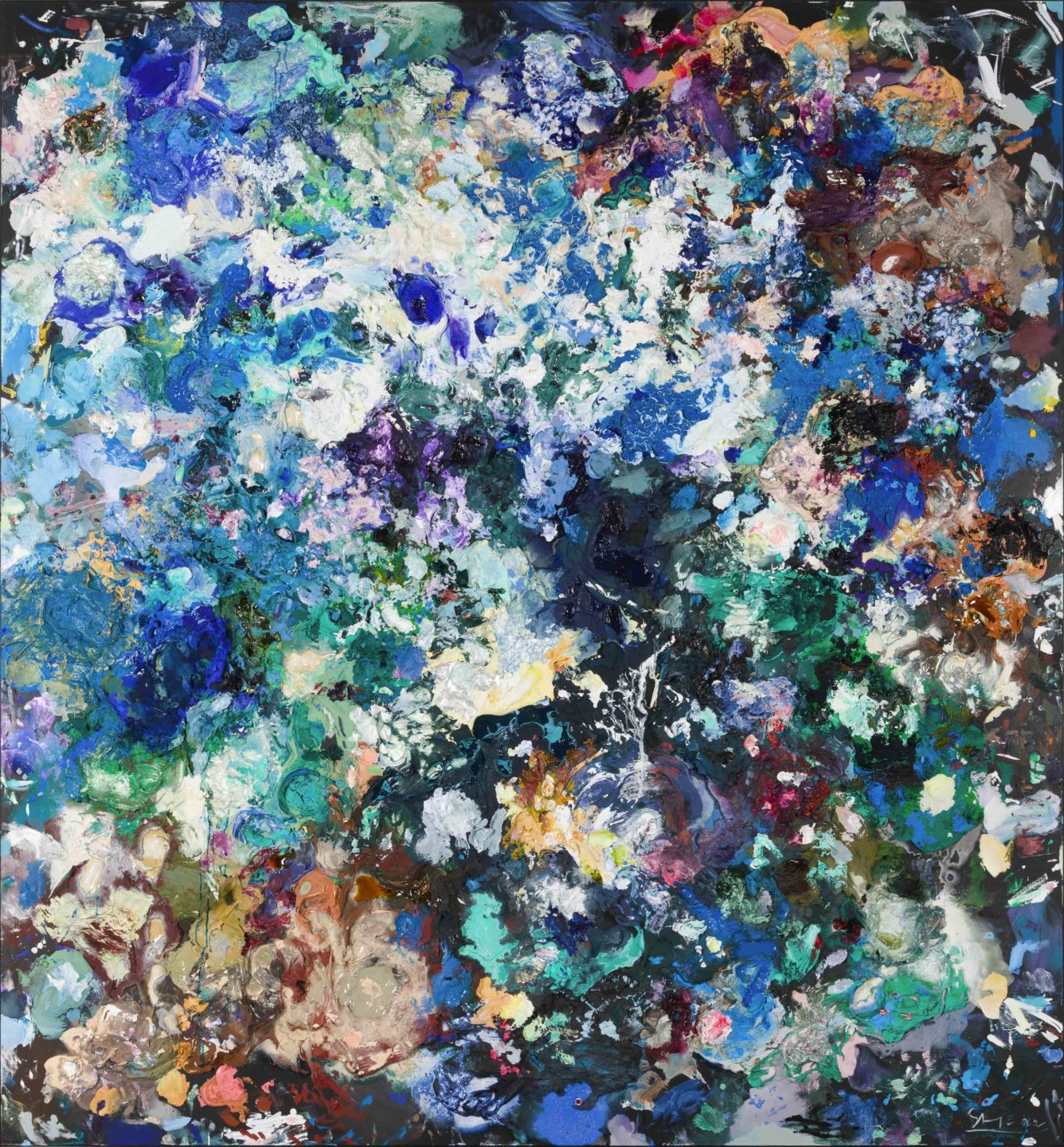
Acrylic, alkyd and oil on linen
286 x 266 cm
112 5/8 x 104 3/4 in
Secundino Hernández, Minimar, 2022
More info‘The message is clear: paint is excessive, oozy, gooey, and corporeal stuff.’ — Wells Fray-Smith
Minimar is a ‘palette’ painting, so-called because it resembles, on an epic scale, mounds of dried green, blue, brown and white oil paint, splotches of spilt turpentine-mixed pigments, and the frenetic energy of seemingly endless dibs and daubs that a painter’s palette endures. The message is clear: paint is excessive, oozy, gooey, and corporeal stuff.
Secundino 2
‘But then, a gear shift. Talier, Crimosa, Castillal – examples of a classic Hernández aesthetic – show painting to be a softer, metaphysical pursuit.’ — Wells Fray-Smith
But then, a gear shift. Talier, Crimosa, Castillal – examples of a classic Hernández aesthetic – show painting to be a softer, metaphysical pursuit. Here, layered forms of colour and line intersect and hover over a flat black ground. More about the ontology of painting is revealed: the excess of a painter’s palette yields a refined composition that feels at once restrained and wildly alive as gesture, line and colour unite in harmonious compositions.
Secundino 3
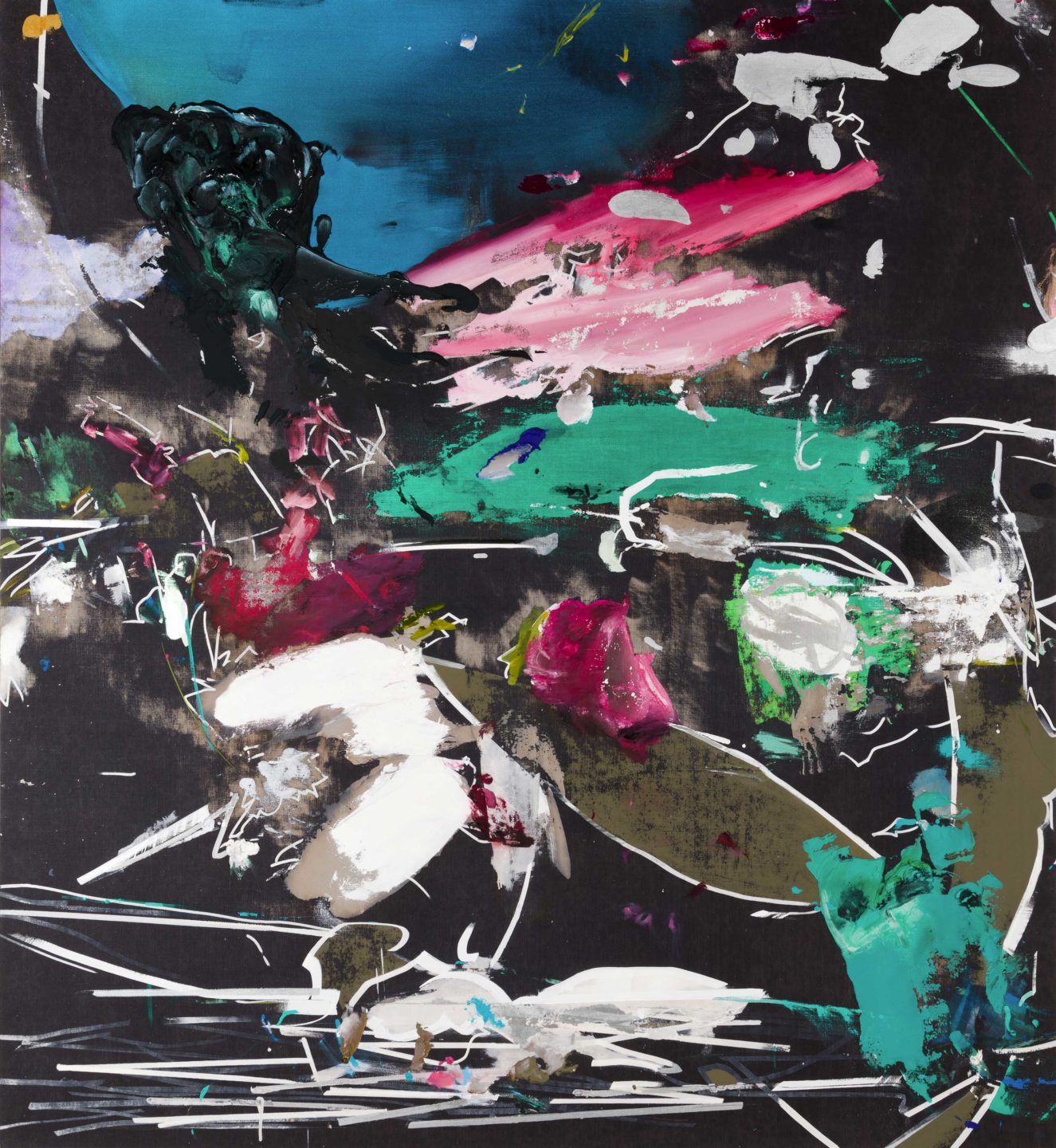
Dye, acrylic, alkyd and oil on linen
309 x 284 cm
121 5/8 x 111 3/4 in
Secundino Hernández, Castillal, 2022
More info‘The excess of a painter’s palette yields a refined composition that feels at once restrained and wildly alive as gesture, line and colour unite in harmonious compositions.’ — Wells Fray-Smith
Secundino 4
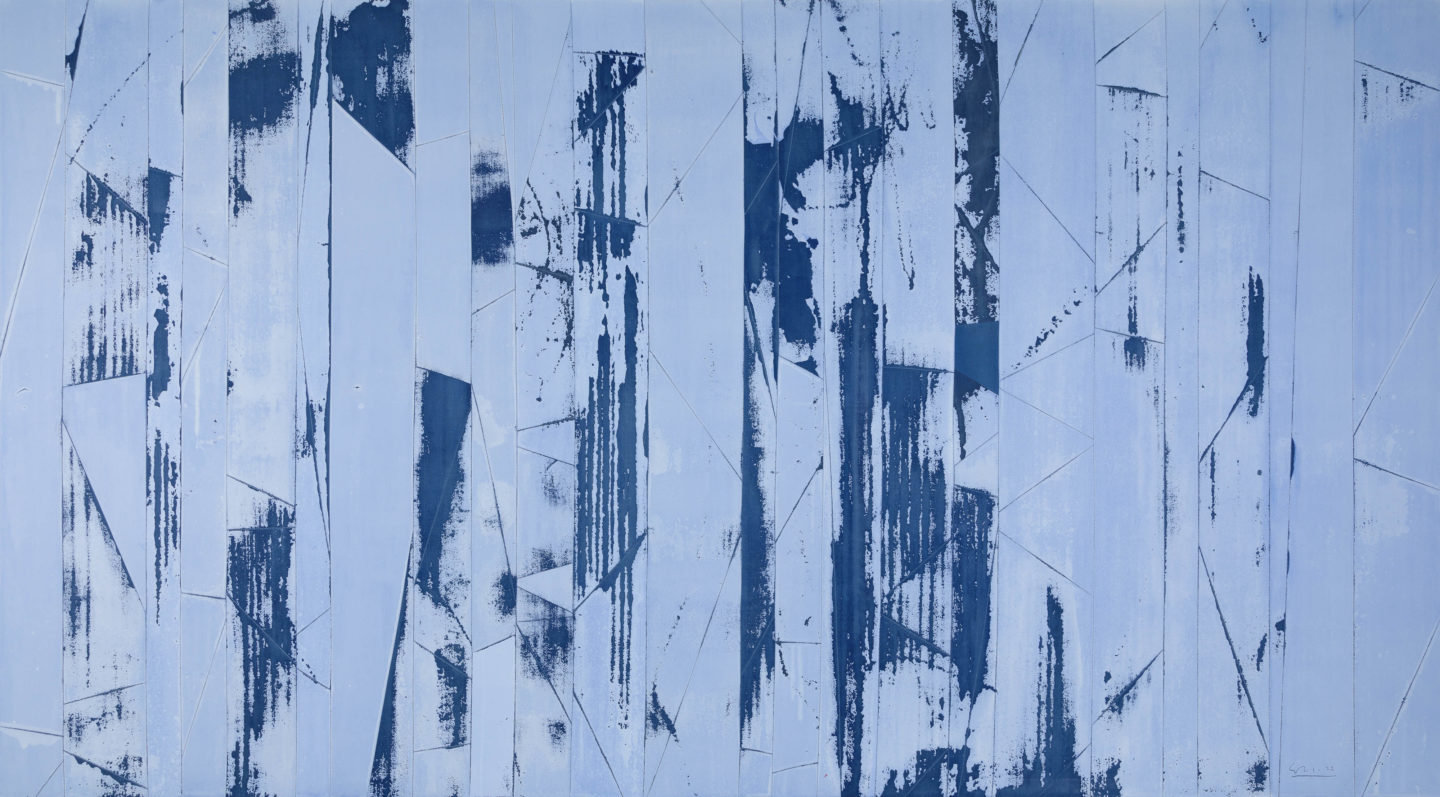
Stitching and dye on linen
305 x 550 cm
120 1/8 x 216 1/2 in
Secundino Hernández, Desire lines, 2022
More info‘The action can feel controlled – as in the stitch painting Desire lines – or wildly untamed.’ — Wells Fray-Smith
We see in the artist’s ‘wash’ paintings, works made in layers, first with the application of primer on linen painted over with colour, which is then washed-off. The action can feel controlled – as in the stitch painting Desire lines, in which primer is ripped off in geometric shreds that follow the shape of sections of canvas stitched together – or wildly untamed.
Secundino 5
‘Amidst the uncertainty, there is a moment when a painting reaches its sublime state and announces itself as finished.’ — Wells Fray-Smith
Amidst the uncertainty, there is a moment when a painting reaches its sublime state and announces itself as finished. This is as much about composition – the all-overness of the forms contained within the edges of the canvas – as it is about colour. In Hernández’s work, colour is about opening up space, and he uses the whole chromatic spectrum to do so.
Secundino 6
‘Looking at them requires a double-take, and an element of disbelief that painting – the oozy, gooey, corporeal thing Hernández has already revealed it to be – can also be this: clean, meticulous, gestural, all-over, contained, ordered and free.’ — Wells Fray-Smith
The experience of looking at all the paintings in time TIME is like looking at a colour explosion. Hernández is fastidious about colour and what it does on the surface of the canvas, just as he is about the type of paint he uses, and what the qualities of one paint might allow him to do over another. He scrutinises tone, viscosity, weight, pliability, quickness to dry. At the top of his studio in an industrial complex in Madrid, he has what can only be described as a painter’s – and a curator’s – heavenly dream. A room filled floor to ceiling with different paints, organised by colour variation and size of tube or container. The point here is that when Hernández is working with red in one of my favourite paintings in the show, Heart shaped (rojo), for instance, he’s not just working with red. He is working instead with different hues of cadmium red (light, medium, deep, scarlet), Quinacridone red and crimson.
In Farewell to, the colour looks almost pointillistic. Crisp, individual gestures of lilac, blue, red and various shades of green from sea-foam to emerald hover on the raw linen in vertical and horizontal patches. There is an element of surprise – a productive friction – in these works as the surfaces appear to be digitally produced, as though the individual swathes of colour have been Photoshopped and printed on the surface. Looking at them requires a double-take, and an element of disbelief that painting – the oozy, gooey, corporeal thing Hernández has already revealed it to be – can also be this: clean, meticulous, gestural, all-over, contained, ordered and free.
Secundino 7
‘The reds of Heart shaped (rojo) bounce into Voy, like siblings with different personalities and spirits but also some underlying shared DNA.’ — Wells Fray-Smith
If the paintings in time TIME share a family resemblance, it is because Hernández’s work is iterative and he often works on three or four canvases at once, admitting that he likes ‘to create an environment where one thing generates another… they are all open to share from one another.’ Hernández will take the colour from one painting and re-use it in another, sometimes even across a series. The reds of Heart shaped (rojo) bounce into Voy, like siblings with different personalities and spirits but also some underlying shared DNA.
About the artist
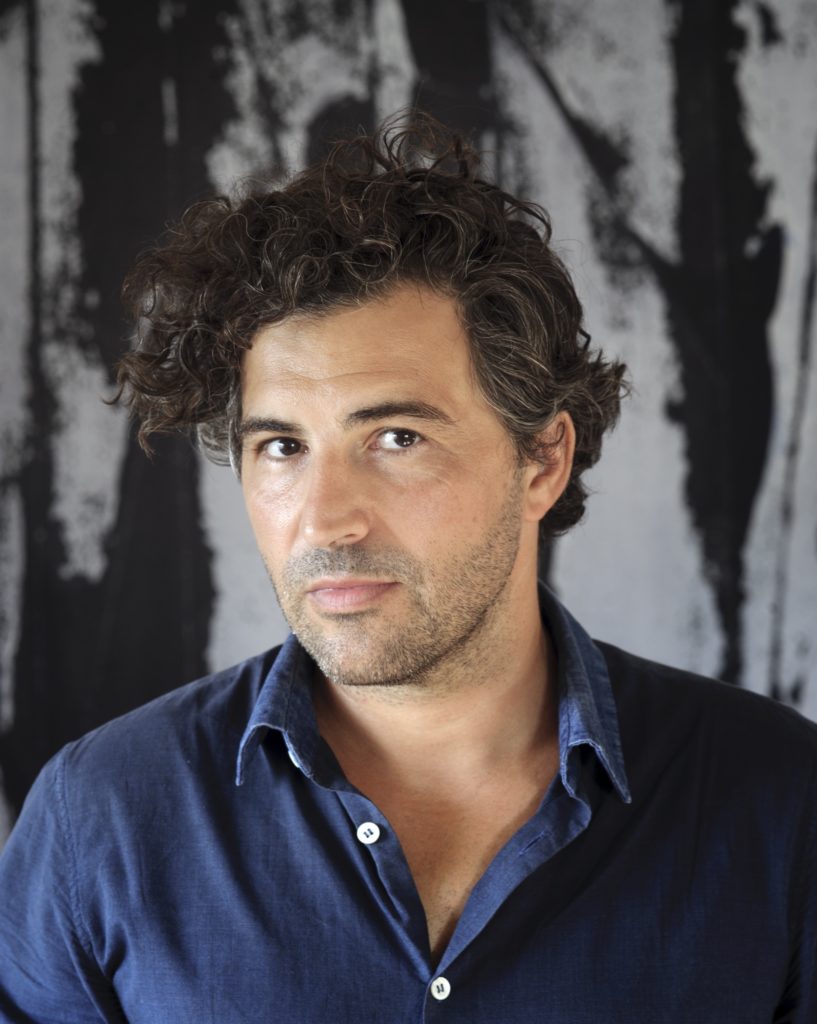
Secundino Hernández was born in 1975 in Madrid, where he currently lives and works. Recent solo exhibitions include It’s good to be back, which was on view at the Miettinen Collection, Berlin (until 31 July 2022). Previous solo exhibitions have been presented at institutions including CAC Málaga, Spain; Taidehalli Helsinki, Finland; Yuz Museum, Shanghai and Maison Louis Carré, Bazoches-sur-Guyonne, France.
His work has also been shown as part of group exhibitions at the Royal Academy, London, UK; Museo de Arte Contemporáneo Español, Madrid, Spain and Canberra Museum and Gallery, Canberra, Australia. His work is in numerous institutional and private collections, including The Meadows Museum, Dallas, USA; The Rubell Family Collection, Miami, USA; Museo Patio Herreriano, Valladolid, Spain; and The Art Gallery of Ontario, Canada, among others.
